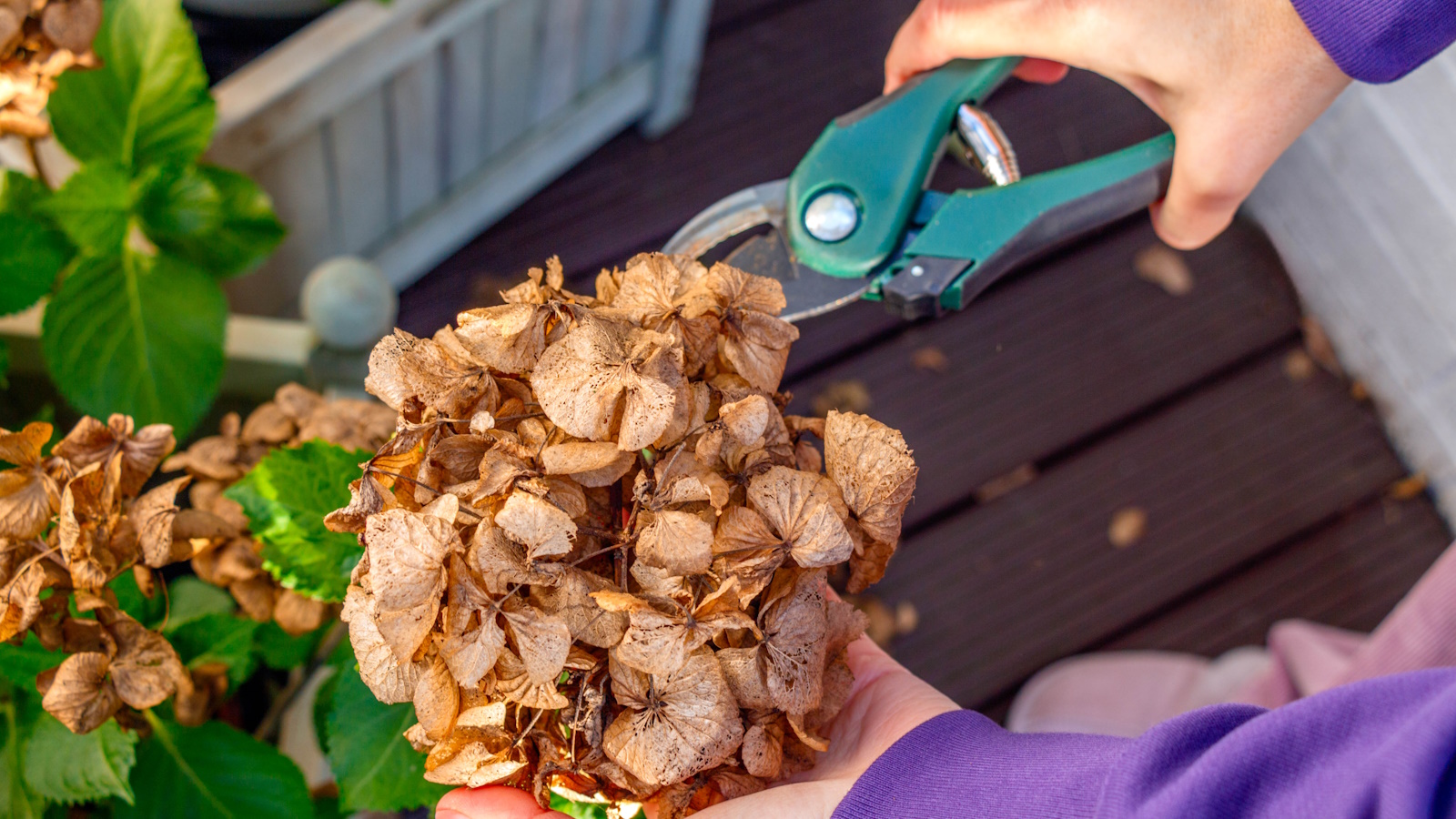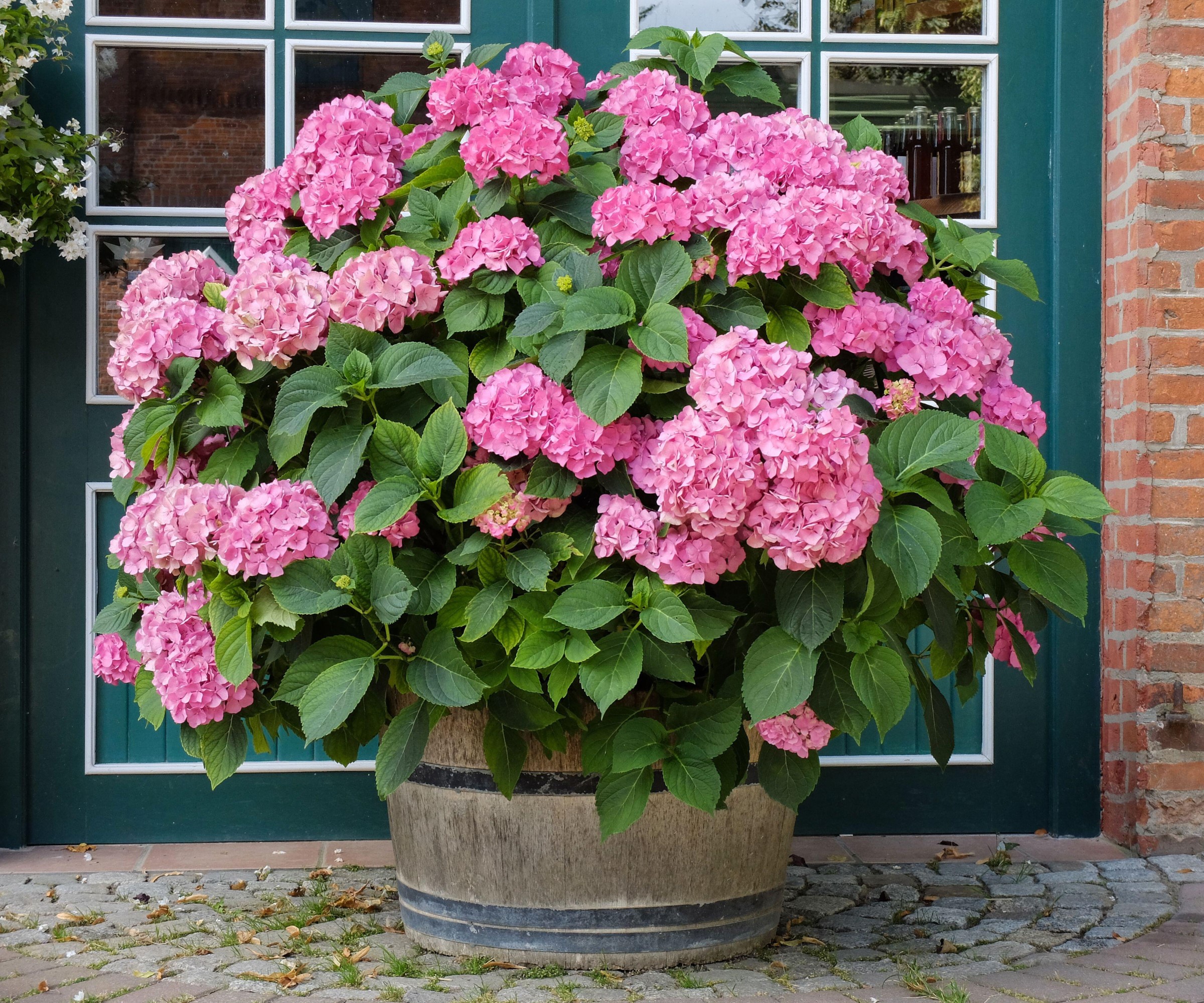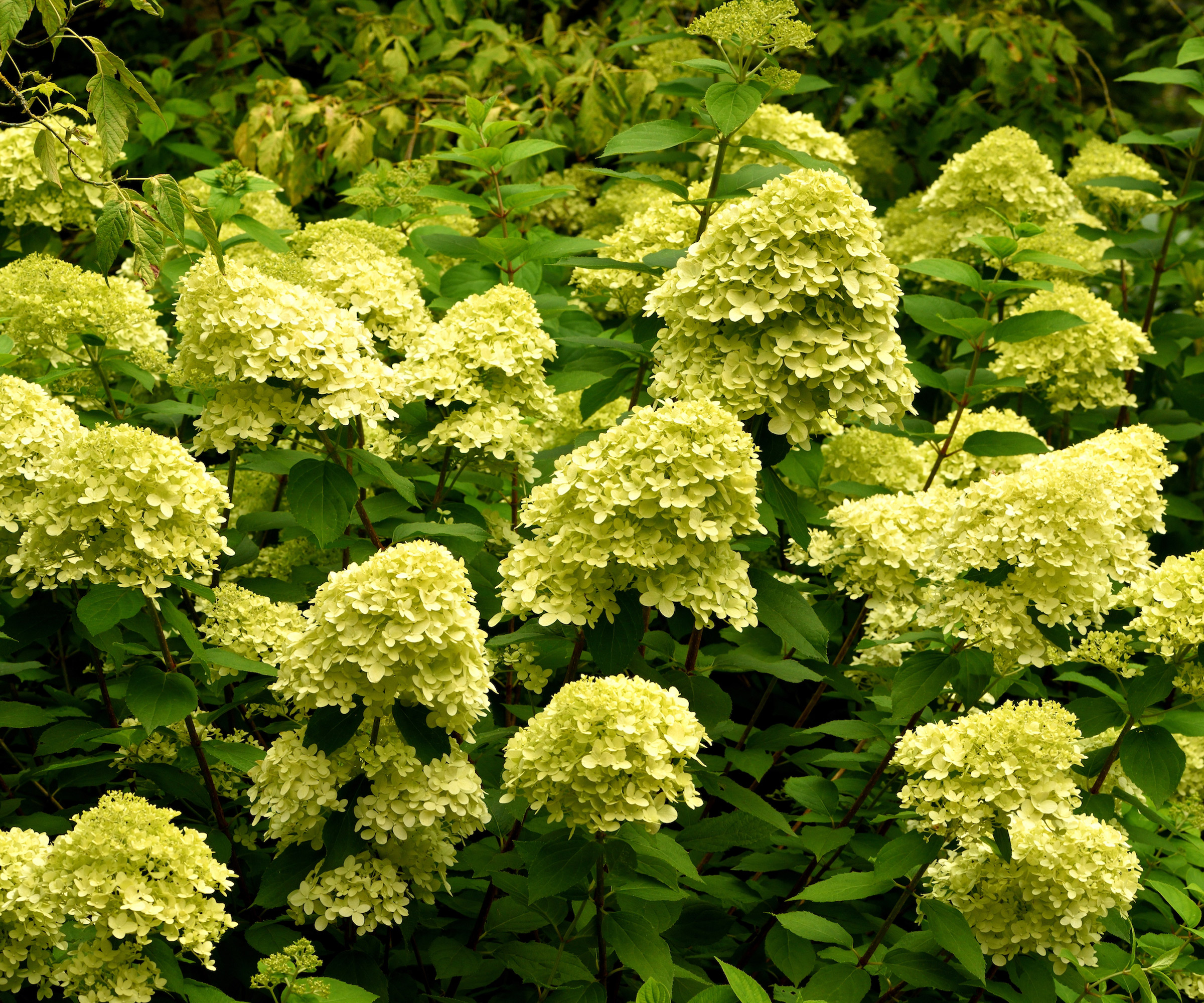
Hydrangeas are hugely popular, versatile flowering shrubs, which have become a mainstay in many types of garden design. They are fairly low maintenance, however it is important to understand how and when to prune hydrangeas correctly to get the best from them, maximize blooms and to ensure that they can survive through winter.
Hydrangeas make a great statement piece in a bed, border or even in containers. They put on a spectacular display of flowers in the summer, and then die back in winter. Tolerant of a wide range of soil and light conditions, apart from a little pruning, they do not require a lot of your time.
While learning how to grow hydrangeas is relatively simple – they can be disappointing over time if they are not correctly maintained through correct pruning and deadheading. Luckily, by following our expert tips this is an easy skill to master.

How to prune hydrangea - depending on the variety
The way that you prune your hydrangea will depend on the variety that you have. Here we will look at the different types of hydrangea and how to prune them.
What to consider before you begin pruning hydrangeas

Hydrangeas are low maintenance shrubs, and among the best flowering shrubs you can grow in your yard. Once you have identified the variety that you have, it's easy to get to grips with how to prune hydrangeas.
Some of these fast growing shrubs flower on old wood and some on new wood, so it is important to prune them the correct way so as to not detrimentally affect their flowering.
'The best way to prune hydrangeas, as with all pruning, should be carried out with a sharp, clean pair of gardening tools. This is to create a clean cut that is less prone to infection,' says Drew Swainston, former professional gardener and content editor at Homes & Gardens. 'If you find that your way of pruning is not yielding good blooms or a healthy plant, you may want to change your approach. Observe your plant through spring and summer to make sure you know whether it flowers from old or new growth.'
These high-quality pruning shears have forged aluminum handles, which will make the pruning process much easier. By investing in a tool like this you shouldn't have to replace it for a long time.
How to prune mophead and lacecap hydrangeas

The method for pruning mophead hydrangeas and lacecap hydrangeas (Hydrangea macrophylla) – also known as bigleaf hydrangeas – is the same.
Mophead hydrangeas are a common choice for backyards with their full, round heads of large petals in shades of blue, pink, green and white. This makes them a popular shrub choice for cottage garden ideas and they also make good shrubs for shade. Lacecap hydrangeas are identified by tiny flowers in the center of the bloom and an outer border of larger petals.
Both these varieties should be pruned in late winter or early spring. 'By leaving the faded blooms in place over the winter, this will actually protect the new buds forming underneath from frost damage,' says Rachel Bull, head of gardens at Homes & Gardens.
When pruning mophead hydrangeas and lacecaps in early spring, follow this method:
- Cut out one or two of the oldest, weakest stems at the base of the plant to encourage new growth and better blooms.
- Using clean and sharp pruning shears, carefully remove old flowerheads just above a pair of buds.
- Be careful not to cut off any of the flower buds.
- If the bigleaf hydrangea shrub has been neglected and has lots of overlapping, tangled branches, you can do a harder prune and cut the stems down to the base of the plant. However, the hydrangea may not bloom until the following year.
How to prune climbing hydrangeas

Climbing hydrangeas, such as Hydrangea anomola subsp. petiolaris, Hydrangea seemannii or H. serratifolia are pruned in summer, after flowering.
'The reason that climbing hydrangeas are pruned in summer is because the flowers are produced on the previous year's wood,' says Drew Swainston. 'If they are pruned earlier in spring, before flowering, the blooms for that year will be sacrificed.'
You can prune Hydrangea petiolaris immediately after flowering to shorten any branches growing out from the wall or support, otherwise only light pruning is required to remove dead or damaged stems.
How to prune Hydrangea paniculata and Hydrangea arborescens

Hydrangea Paniculata with its cone-like heads of blooms, and Hydrangea aborescens with its spherical flower heads, are also pruned in early spring.
They produce flowers on new wood, so they can be pruned back harder without sacrificing that year's flowers. Prune old branches back to the lowest pair of healthy buds near ground level for a neat framework.
You don’t actually need to prune these varieties, but you can do it to keep them from getting too tall.
Other types of hydrangea, including Hydrangea aspera and Hydrangea quercifolia, need only light pruning in spring. Simply remove dead flower heads and any crossing stems.
Top tip: By cutting stems to different heights, you’ll get flowerheads produced at different levels.
FAQs
What happens if you don't prune hydrangeas?
If you don't prune hydrangeas then they can eventually resemble a tangled mass of woody stems, and the flowers will become smaller and less showy. If your hydrangeas are not blooming, lack of pruning is often a reason.
Regular pruning of hydrangeas helps to maintain their shape and also encourages new growth and a better display of blooms. It's this strong, new growth that ensures you have lots of large, healthy flowers to enjoy in the years to come.
Should you cut off dead hydrangea blooms?
Deadheading hydrangeas – or removing spent flowers from the stem to encourage better blooming later on – can be done with some hydrangeas but not all.
Dead blooms should only be removed from mophead hydrangeas after flowering in mild areas. It is better to leave the flowerheads on the plant over winter to provide some frost protection. By leaving the dried flowers on the plant, they will provide interest in the garden through to spring, and can be a stunning sight when covered in a coating of frost. The flowers on the hardier lacecaps, however, can be deadheaded after flowering.
Once you're confident knowing how to prune hydrangeas, you'll be rewarded with wonderfully healthy and floriferous shrubs. There are so many ways you can grow hydrangeas, such as in pots to place on a patio or balcony, or by landscaping with hydrangeas in a larger space.







